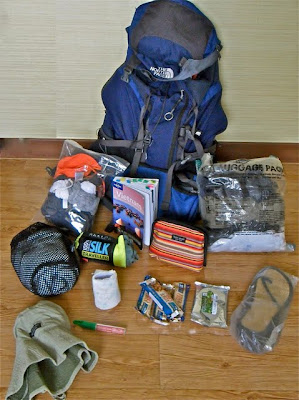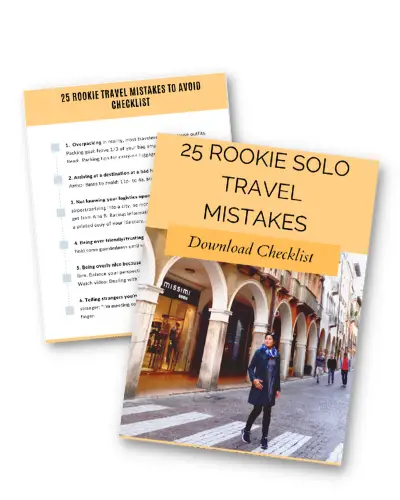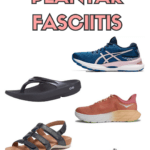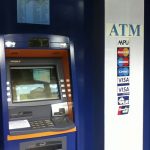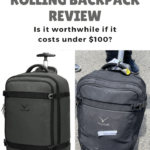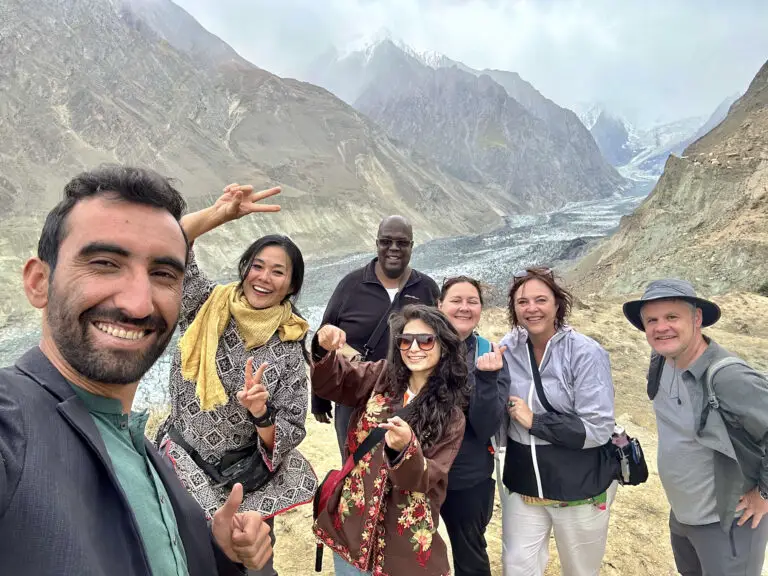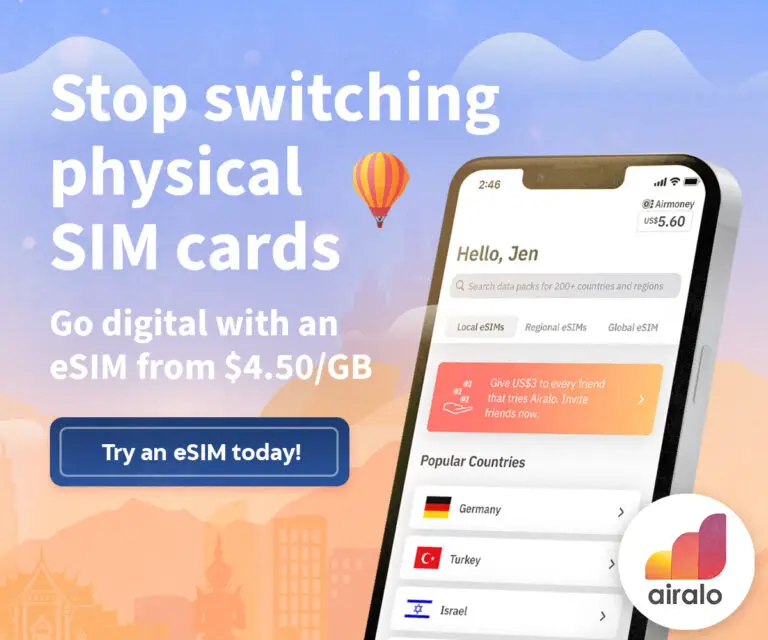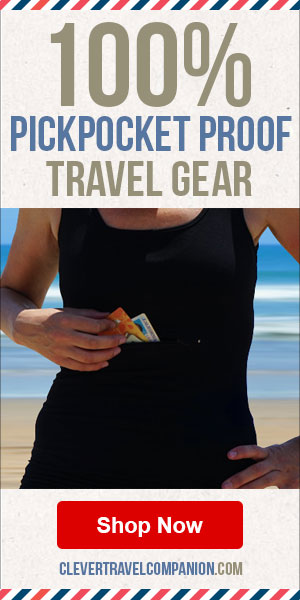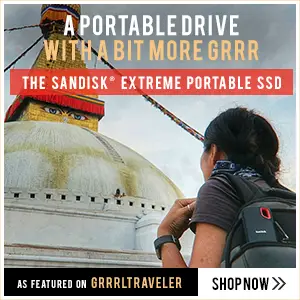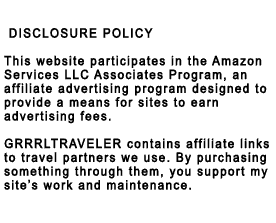Last Updated on June 7, 2023 by Christine Kaaloa
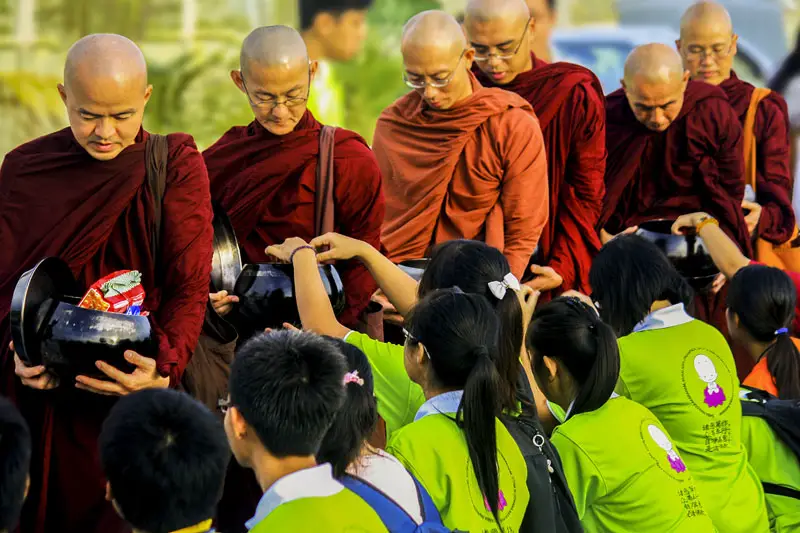
Recently, a reader asked me if I have any tips for packing light for summer travel. Due to the fact I launch off to Vietnam tomorrow, I decided to share my tips on packing for Southeast Asia.
Climate in Southeast Asia
Table of Contents: What to Pack for Backpacking Southeast Asia
The climate in Southeast Asia on the whole is hot and humid. The rainy (or monsoon) seasons are Oct-Dec and in cases like Borneo, go until February. Due to the heat, some countries (and their transportation) might turn the air-conditioning on high. One example would be Thailand, which always has freezing a/c in buses and sometimes, trains.
Dress etiquette in Southeast Asia
While the dress style is casual, keep in mind some cultures can be conservative in their beliefs, even if they don’t appear it. Women might wear shorts but still cover their shoulders. Men can wear tank tops but you seldom see Southeast Asian men go topless in public. The predominant religion is Buddhism, so know temple etiquette is to remove shoes and have legs covered. For the ladies, this means a below the knees skirt at the least (no skirts).
Possible Activities in Southeast Asia
Southeast Asia can have a lot of nature activities like hiking or trekking, rock climbing, scuba diving caving. Aside from visiting temples, you may be spending time seeking out waterfalls, rivers and beaches.
1. Sizing up my backpack
I consider myself a medium packer.
When packing for Southeast Asia, I pack for a spectrum of weather, health, culture, activities, accommodations and above all, comfort. I never know when I might be roughing it, battling insects or having my stomach turn on bad food. I dress for laid back casual and light-weight.
Read Ways to Outsmart Pickpockets and Thieves
Packing for Southeast Asia
Convertible, convertible, convertible . Most things I pack, I make my Swiss Army tools of travel.
Clothing
Is the country you’ll visit religious or conservative in their wardrobe? Do your locations vary in climate?
The ability to peel down or cover up is good to plan for if you’re uncertain.
Southeast Asia is said to have three climates- hot, hotter and hottest (it also has monsoon seasons). It is humid; expect to sweat.
Avoid thick fabrics which take long to dry. Quick-drying, micro-fiber or light-weight clothes, even thin nylon/spandex fabrics are smart choices. These fabrics can be cooling to your skin and dry evenly even in thick humidity. Believe me, wet clothes sitting in your backpack is not a fun smell you want greeting you after a day in the summer sun.
Tops
- 1 light-weight short sleeved cotton t-shirt
- 2 Indian long-sleeved shirts (*if anyone knows how to dress for conservative, yet battle the summer heat, it’s India)
Read Packing for India
Pants
Jeans is not my favorite pant for Southeast Asia unless I’m visiting for business travel. The fabric is thick and you’ll only really use it for cosmopolitan environments. On the other hand, I always pack my Northface pants, as it converts quickl into shorts, knickers and pants and is great for rugged activity such as treks.
Tip: Knock off one or two from this list and buy fishermen pants. They’re cooling, inexpensive (depending upon country, they’re around $6 USD) and you’ll find many hippie travelers enjoying the comfort and fashion of them.
- 1 skirt (knees length of longer in the case the countries I visit are conservative. Skirts are also perfect for squat toilets)
- 1 pair of North Face Paramount convertible pants
- 1-2 pair of light-weight, quick to dry leggings
Bed wear, underwear & swim wear
I decided to clump all the above into one category because I like to make the most use of my items by having them double up on purpose. My swim wear doubles as night wear and sometimes, underwear. My bed time wear also doubles as backup daywear and workout wear.
It’s always safe to pack a swim suit for Southeast Asia as you can experience beaches to rivers and waterfalls. Southeast Asia is also known for inexpensive PADI diving certifications and snorkel activities. Sunscreen is a must and while you can buy it abroad, it might be cheaper to get where you’re from as sunscreen costs are premium, along with whitening products. Also, if you’re hitting the ocean hard, you might consider eco-friendly sunscreen to reduce your carbon footprint on the reef and marine life.
- 1 thin nylon tank top
- 1 bra
- 5 pairs of underwear
- 1 pair light-weight Nike yoga pants (* extra protection against mosquitoes at night)
- 1 two-piece Roxy bathing suit
(Also functions as an extra bra/underwear)
- Sunscreen (in Asia/Southeast Asia, starting at $8).
- A large-brimmed safari hat for sun protection
Footwear
Flip flops and sandals can play more of a role in your casual sightseeing and temple going. Temples in Southeast Asia will require you to remove footwear so footwear that’s easy to slip on and off is ideal. Running or hiking shoes are good for physical activities like trekking.
- 1 pair Havianas rubber flip-flops
* casual walking, beaches, bathroom showers
- 1 pair of New Balance 701 running shoes *I always pack a shoe for sporting activities, i.e. trekking, caving, etc..
- 2-3 pairs of thin nylon socks
Toiletries
Do you really need all that product? Rather than bringing an entire jar of makeup or skin cream, I use tiny 2 oz travel containers and sample sizes. Alternately, taking used tubes of toothpaste and old hotel shampoo bottles allow me to use up old stuff and then buy the rest in Southeast Asia where toiletries run cheaper. Thai 7Elevens stock a variety of toiletries as well as, over the counter medicines.
For towels, I have a quick drying Korean hand scrubber and an Eagle Creek travel towel.
I also always pack a Flip n Tumble reuseable fold-up travel bag, for hanging toiletries (and clothes), in-flight use, marketing or shopping. I take a cheap cabiner hook or S-hook to hang this bag or clothes to keep them from getting wet when showering.
(Above) sample and trial sizes… and actual samples!
Tampons
The one thing western women will have difficulty finding are tampons. Thailand sells them in 7 Elevens and pharmacy stores, but they’re more the exception than the rule.
Tech gear & accessories
Tech gadgetry in a developing countries can range from medium to impossible to find. You can’t always trust the electronics you purchase there. It’s always best to prepare extra batteries. Always take the charging/power cables you need. If doing a camping or trekking journey, never assume facilities will have electrical outlets. In some instances, they don’t.
I take a unlocked iPhone or GSM travel phone, camera, SD memory cards, day pack backpack and of course, backup batteries and charging cables. See my film/blogging gear here.
- Country plug adapters
- Extra memory cards and spare batteries
- Chargers and charging cables
- A power strip in the case you’re sharing outlets with other travelers.
Updated packing list here.
Backpacking accessories
- Silk liner
— it protects you from your bed & functions as a light sleeping bag/sheet
- 1 bottle of diluted solumel which you can also use as insect repellent (*read ways to avoid bed bugs)
- Your travel medicine such as aspirin, anti-diarrheal pills, motion sickness pills, etc… & a small first aid kit
Useful Accessories
- 1 big pashmina scarf
(* multi-use function: face mask, shawl or headdress for conservative countries or religious temples, blanket and on some occasions, towel.)
- 1 cheap disposable poncho
(*Rainforest or monsoon season
- Extra plastic ziploc storage
or ziploc sandwich bags
(* for dirty clothes, protecting your stuff from rain or mud, organizing currency, etc…) Read: How to Organize your Currencies
- Snacks & Vitamins: I always take power bars as rev up snacks and EmergenC
(supplemental vitamin powder) packets, while I’m traveling. I’ll sometimes pack a bag of dried fruit and mixed nuts as a backup meal for times when I don’t feel comfortable with my food options.
- Pack of tissues or small roll of toilet paper (* you’ll need them for public bathrooms & rest stops)
- Environmentally friendly baby wipes
- A pocket flashlight
- A waterproof backpack cover for rainy seasons.
- Optional: 1 lightweight rain jacket for cold nights or air-conditioned trains
Travel insurance
While Thailand is my home for dental and medical tourism, not everyone feels comfortable with finding their way through this if they’ve had an accident or caught a bout of dengue fever. I’ve used World Nomads Travel Insurance for any trip that’s over a month. You can get insurance for short trips too and it’s smart for international travel. It covers most everything and the types of at risk sport activities common to Southeast Asia, like trekking, caving and scuba diving, etc..
Travel documents & health
- Extra passport/visa photos (many backpackers to Southeast Asia like to travel more than one country and do overland crossing.)
- Malaria prevention is one travel shot you may want to ask your travel doctor about. Southeast Asia has had malaria outbreaks and mosquitoes can even be found in urban areas.
Tips for shopping in Southeast Asia
You can buy a lot in Southeast Asia.
Thailand is best for shopping travelers as they have a lot mall shopping, pharmacies and 7 Elevens where you can get the basic necessities, like aspirins, dehydration salts and motion sickness pills. In beach towns, they’ll also sell beachwear and water accessories.
Backpacker areas generally have stores which sell travel products for tourists. While they may not always have recognizable name brands, they might have knock off versions.
I always assume I’ll pick up some of the country’s local garb to travel around in, because no one knows how to cope with the country climate better than the people who live there!
Shopping is a universal language in most parts of the world. Unless you’re traveling to a rural locale, you can buy most basic products in big cities. Alternately, a trip to the local store will prove an interesting and enlightening cultural trip!
When my backpack got lost on my way to Morocco, I bought throwaway clothes and underwear (which I eventually decided I wanted to keep as souvenirs), soap and sanitary pads from the a store near the railway station. I came back with pretty funky souvenir experiences from that trip, like olive oil soap and a loofah from my hammam baths.


